
| Ningaloo |
|
|
|
|
|
|
|
||
Cape Range National Park |
||
|
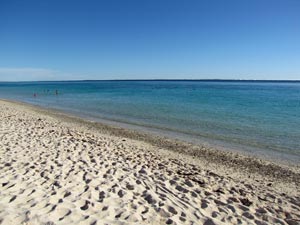 The Turquoise Bay drift snorkel |
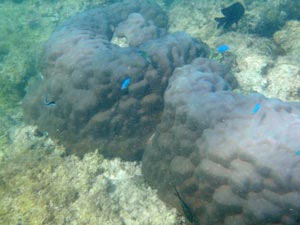 |
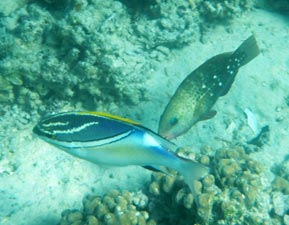 |
 |
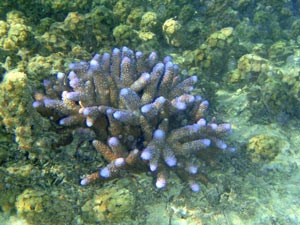 |
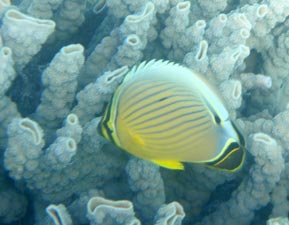 |
 |
|
||
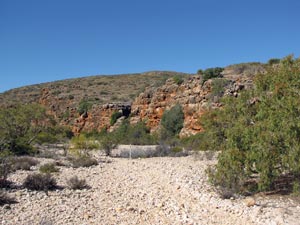 The white stony bed of Mandu Mandu Creek |
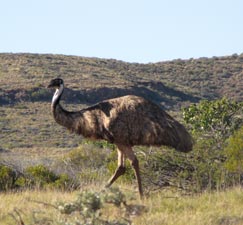 One of the park's many emus |
 View down Mandu Mandu Gorge |
|
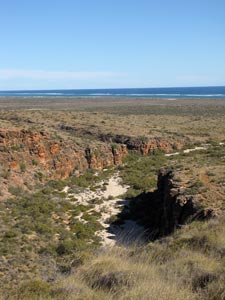 View from the Coast Range toward the ocean |
|
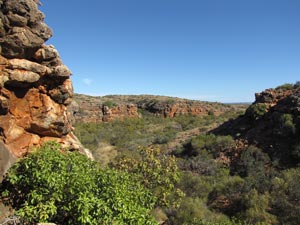 Crossing a side gully at Mandu Mandu |
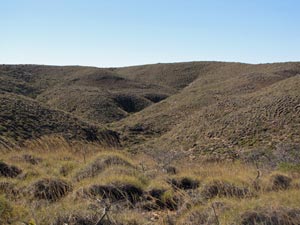 The arid spinifex-covered hills of the Coast Range |
|
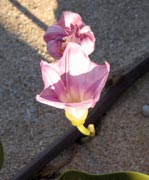 |
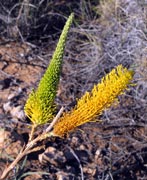 |
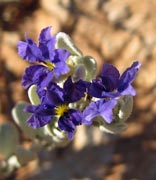 |
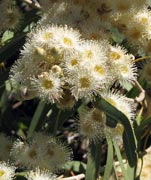 |
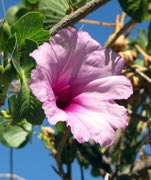 |
|
||
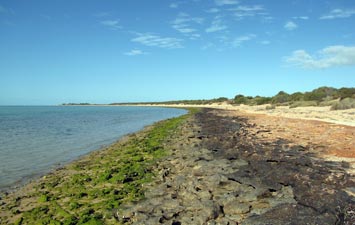 Shoreline at The Oyster Stacks |
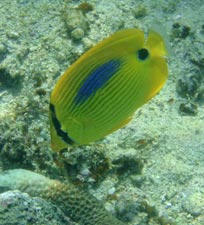 |
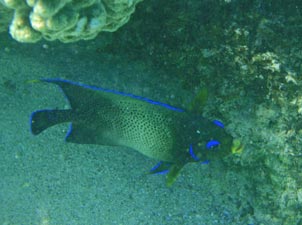 |
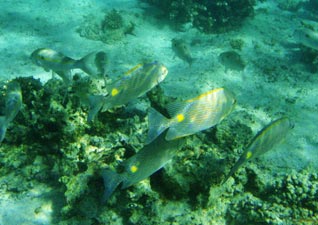 |
 |
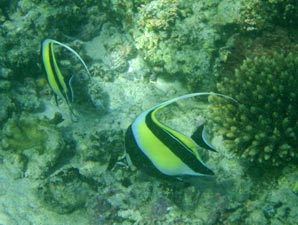 |
Day of the Whale Sharks |
|
|||
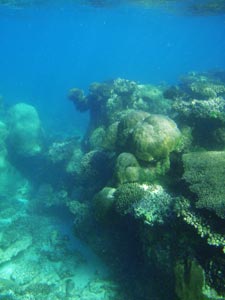 |
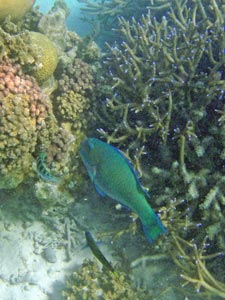 |
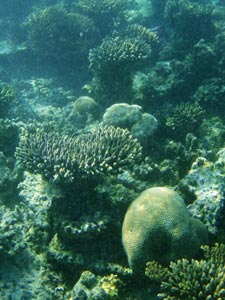 |
 |
|
|||
|
For those who have not swum with whale sharks, here is how it works. A spotter plane flies up and down the ocean–side of the reef and, when it spots a shark, directs the boat to it. We shark-swimmers don wetsuits, flippers, mask and snorkel and are divided into two groups of ten. The rules are very strict to minimize stress for the shark – only 10 swimmers in at any one time, keep out of the shark’s path and keep at least 3m from its flanks and 4m from the tail, which could bat you aside in one fell swish. The skipper positions the boat 40-50m ahead of the approaching whale shark and the first group of ten jumps in. As it approaches, the first thing you do is replace the snorkel which fell out when your jaw dropped in wonder at this huge and magnificent fish, with its wide jaw, sleek spotted body and accompaniment of large cleaner fish and schools of smaller fish that swim beneath its belly. An entire oceanic community is approaching and it weighs several tones. Initial shock and awe over, you pick up the shark as it passes to swim alongside, finning as fast as you can to keep up, because even a slow cruise for an 8m shark is a fast swim for an out-of-element human. It is a curious sight from above; the tip of a dorsal fin just breaking the water surface with a row of snorkels and churning flippers stretched out on either side in a “V” formation. Once the first group is swimming with the shark, the boat repositions and the second group jump in 40-50m ahead again and wait. The first group then stop and quickly get back on board, while the second take over shark watch duties – it’s a bit like a game of tag. Final rule, you cannot stay with the one shark for more than an hour, although the whale sharks themselves seem either oblivious to or completely disdainful of their company as they continue on their meandering oceanic cruise, water flowing through their mouth and out their gills where long rakers filter out the food. |
|
|
|
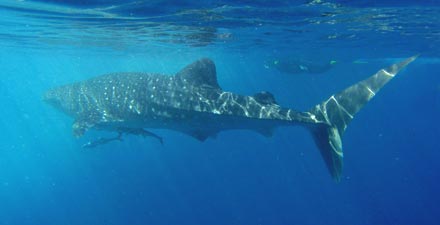 A snorkeller gives some perspective to the size of the shark |
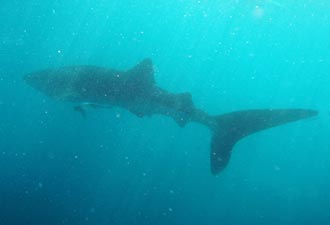 Shark disappearing into the depths below us |
 The big surf rolls in over the outer fringe of Ningaloo Reef |
|
|
|
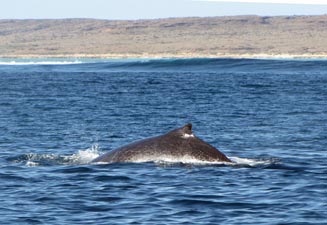 Normal view of surfacing whale showing dorsal fin |
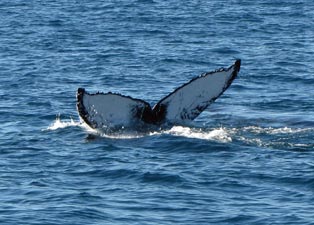 Tail display |
|
||
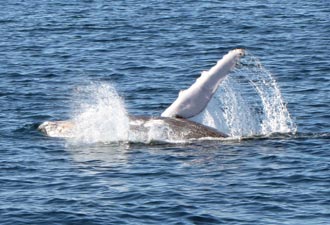 Pectoral fin roll |
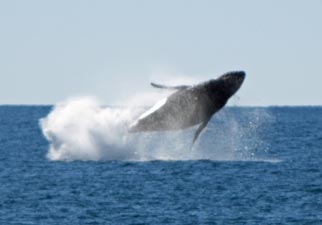 The full monty - all 40 tonnes clear of the water!!!!! |
|
|
||
Coral Bay
|
|
 |
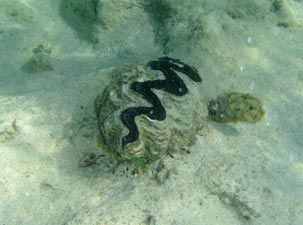 |
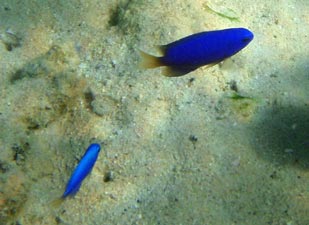 |
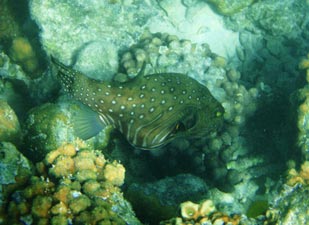 |
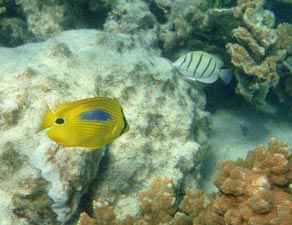 |
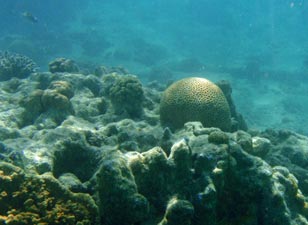 |
|